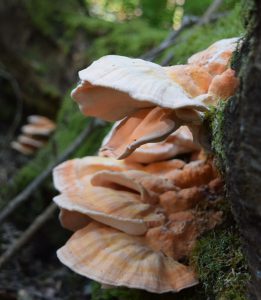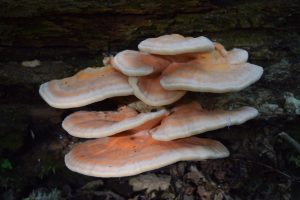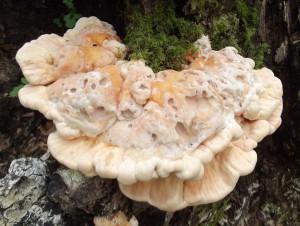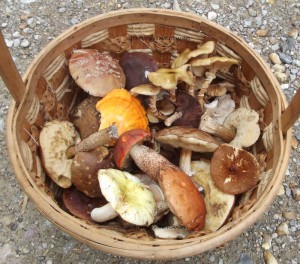Email: geoff@geoffdann.co.uk
12/05/2018
Judging by the large number of photos currently being posted from every corner of the country, 2018 is shaping up to be a classic year for Chicken of the Woods (Laetiporus sulphureus). If you’ve never found it and always wanted to try it, right now is the time to go looking. Chicken of the Woods is an unmistakable bright orange-yellow bracket fungus with a strong and pleasant smell of something like mushroomy-chicken. The only thing people easily confuse it with is Giant Polypore (Meripilus giganteus), which is greyer, larger, lacks the chicken smell and bruises black (and it’s not poisonous). COTW can be found growing on a variety of dead and living trees, especially oak, cherry, chestnut and yew. Some people claim it is poisonous when growing on yew, but there’s no actual evidence to support this theory and I have eaten it from yew on
numerous occasions. May is typically when it starts fruiting, although it sometimes fruits again
in the early autumn. It is best eaten after its initial yellow “blob stage”, as soon as it has developed into brackets, but before if starts to get tough (at which point it becomes sour, and then bitter).
There’s many ways you can cook it, but my favourite is a cream and herb sauce.
Ingredients (quantities to taste):
Fresh Chicken of the Woods
Fresh thyme (chopped)
Fresh chives (chopped)
Double cream
A little parmesan, grated
Salt and Pepper
Method:
Slice the Chicken of the Woods thickly.
Fry gently for 6 or 7 minutes in a 50/50 mixture of olive oil and butter. Turn regularly, do not burn.
Add the herbs and fry for another 30 seconds.
Add the cream and parmesan and continue cooking gently for another 3 minutes.
Season to perfection, and serve immediately.





